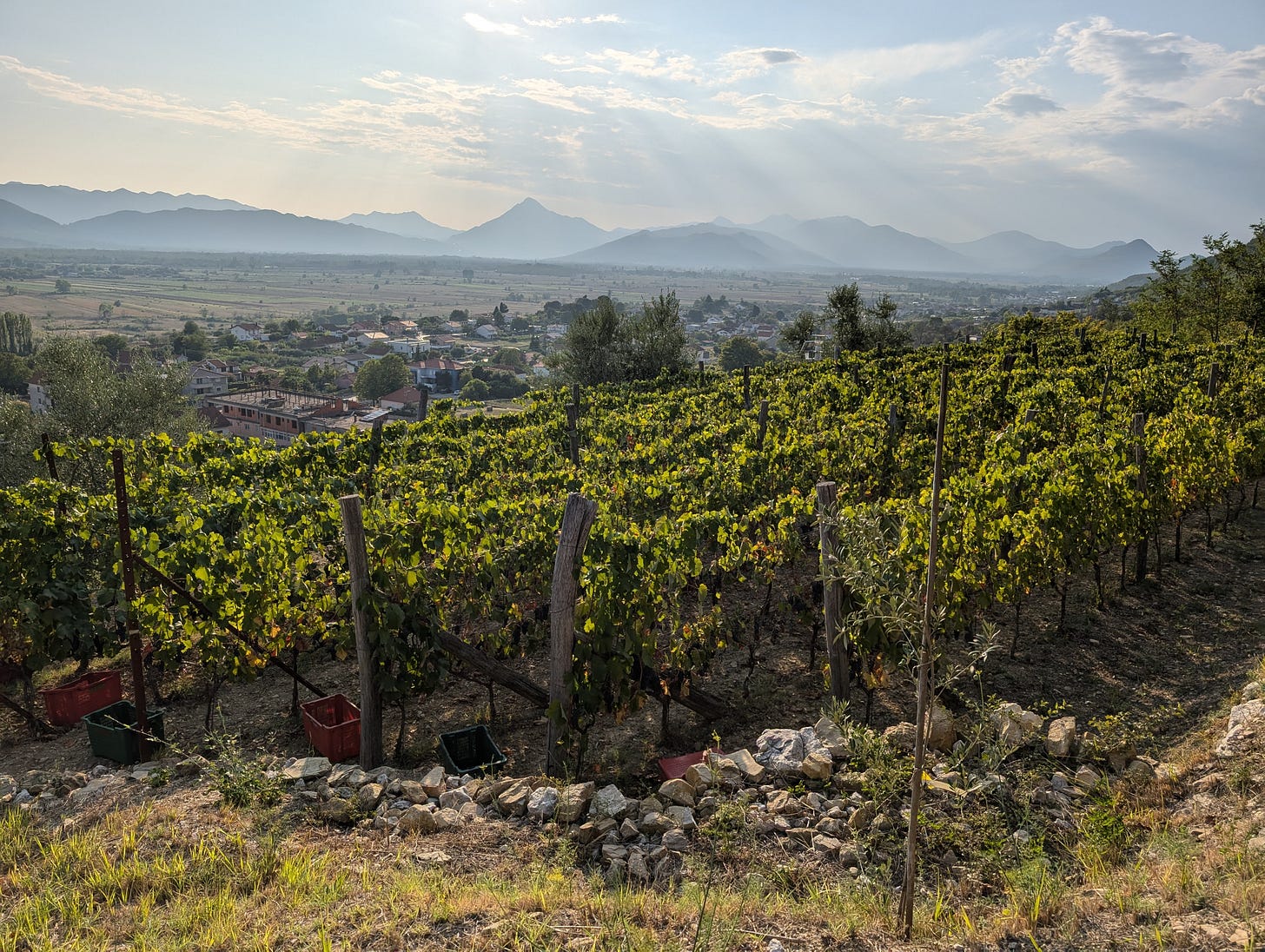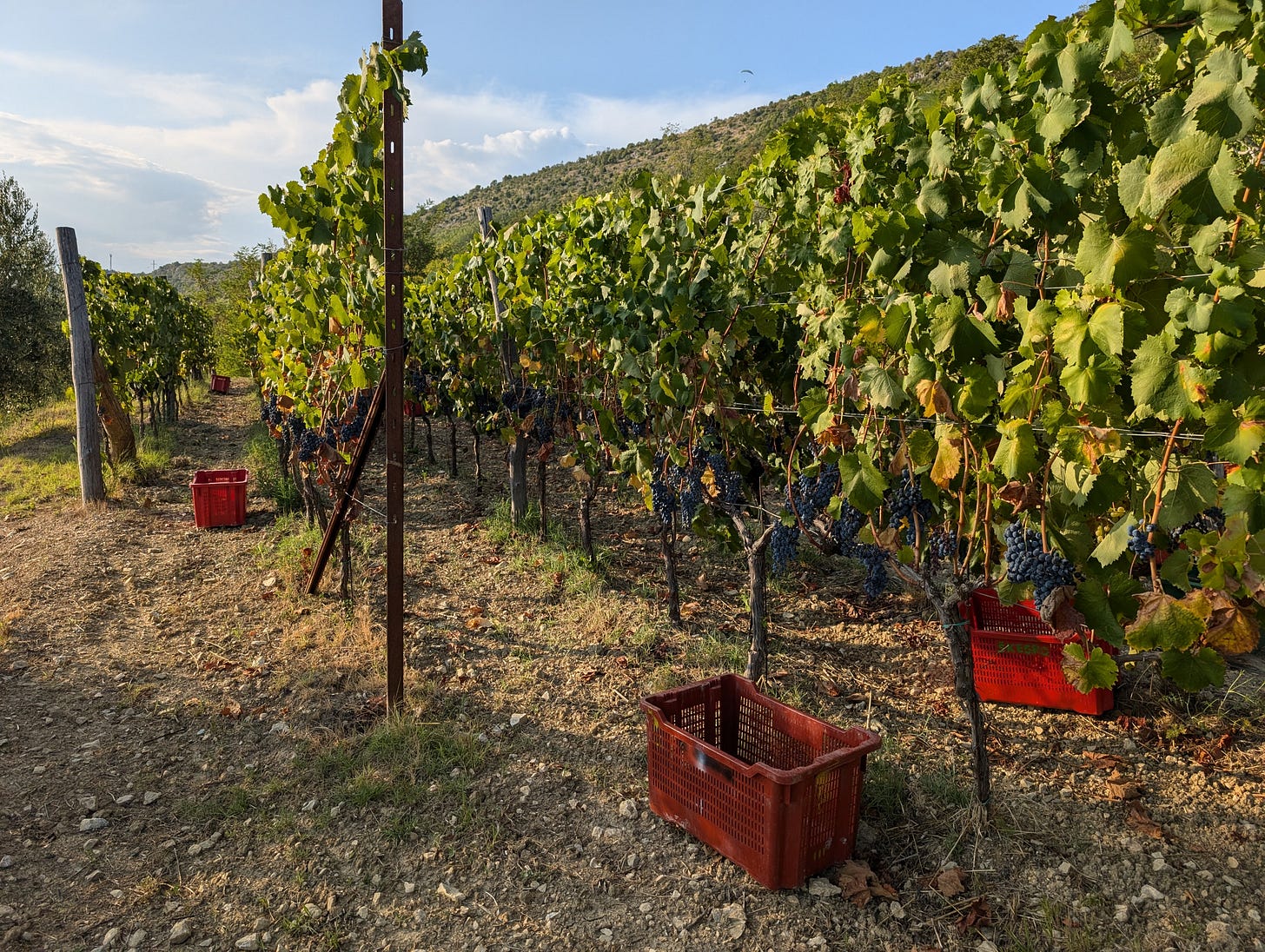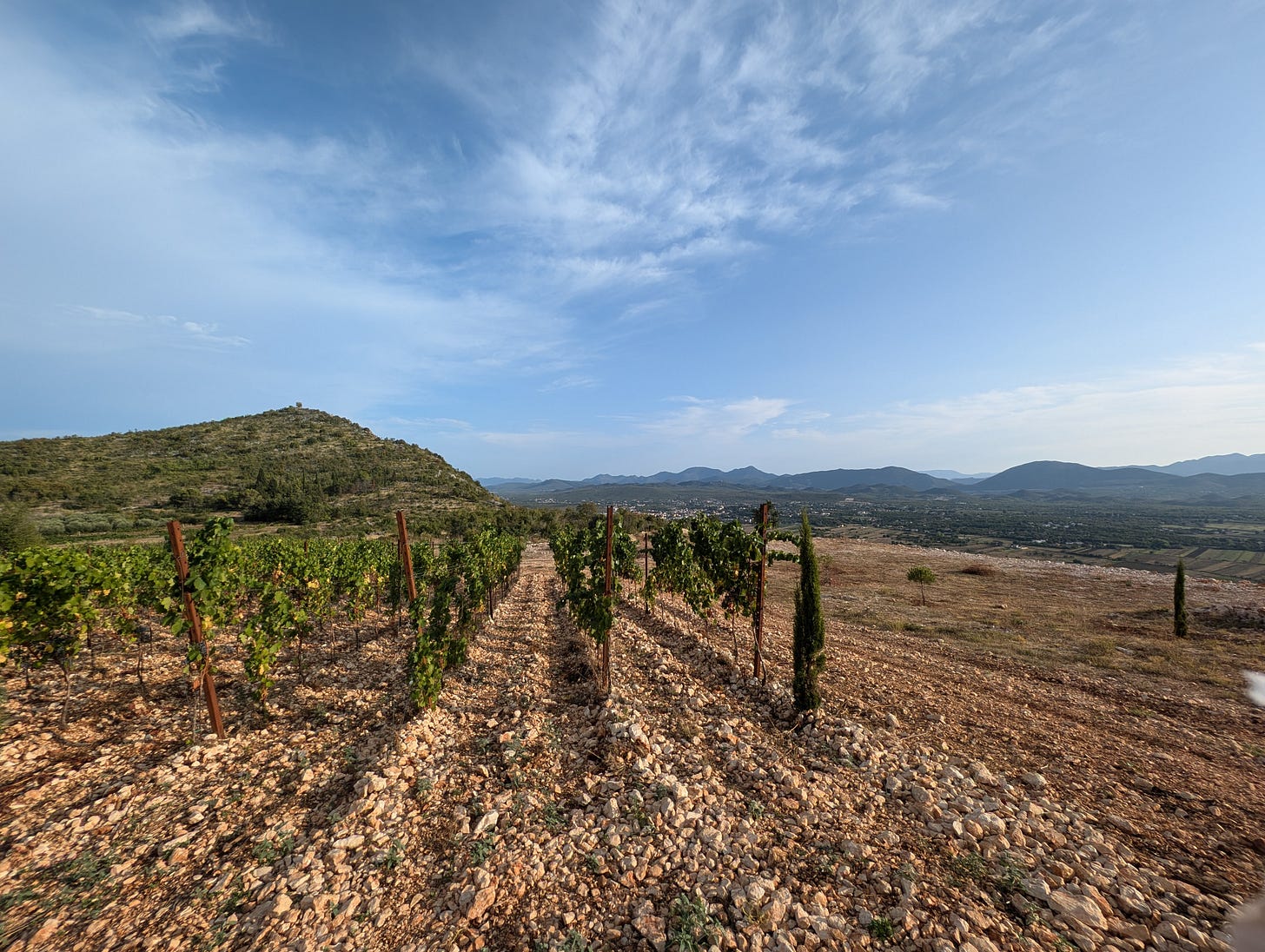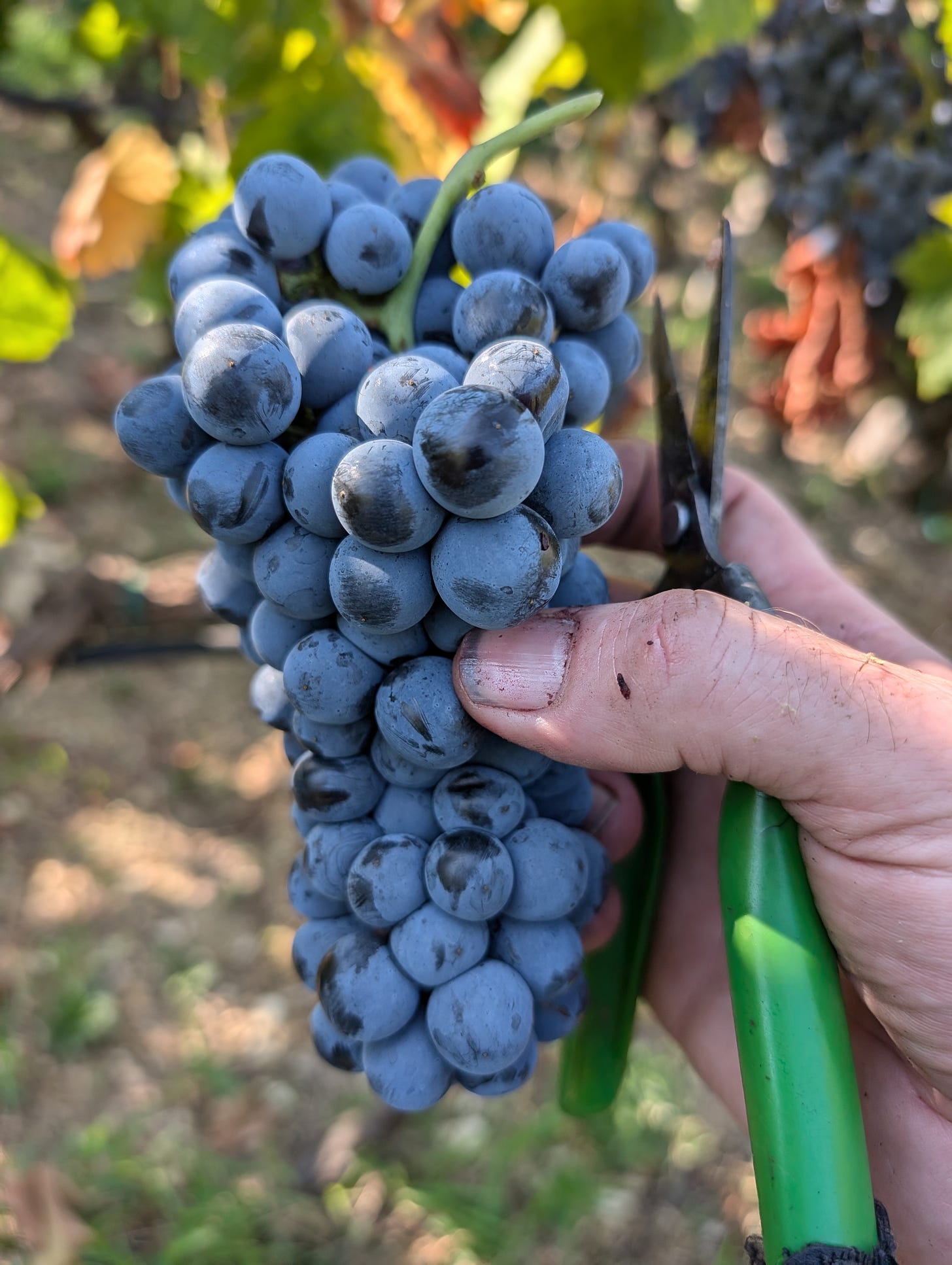Despatches from the Road II
Making Wine in Herzegovina
A shortish update this week, as I’m spending almost every working hour doing harvest and making wine in Bosnia-Herzegovina.
Who knew that Bariša Škegro would take the suggestion that I come and make some wine at his family’s winery seriously. It was a spur of the moment thing, a crazy idea that surfaced in September 2023 as we sat by the river gorging on ćevapčići and drinking beer.
But not only was the collaboration not laughed out of court, it grew wings and prepared for take off in 2024. After a January meeting in Zagreb and various phone calls and chats, we had a rough plan and a brand - Grape Revolution. We just had to wait to see when the grapes were ready. And that turned out to be late August, after a rainy spring followed by a brutally hot, dry summer.
A quick clarification, because it seems to confuse people: Bosnia-Herzegovina, informally known as Bosnia, is one country divided ethnically and linguistically into three parts - Bosniats, Croats and Serbs. As far as wine is concerned, the only area of interest is Herzegovina, which is overwhelmingly Croat, and more importantly for wine, also overwhelmingly Christian.
My interest was piqued on that first visit to Škegro in 2023. They’re one of perhaps 20 serious wineries in the region, based in the small town of Ljubuški. What singles out Škegro is the superior location of their vineyards. All five hectares are ranged over a series of south-west facing terraces topping out at 350m a.s.l. Perfect sun exposure combined with a little extra freshness from the elevation is a killer combination. Bariša suggested with a cheeky grin that “this could be the grand cru of Ljubuški.” With just about all the rest of the region’s vines slumming it on the baking hot valley floor, I think he might just be right.
I’m a sucker for lesser known grape varieties, and Herzegovina has a trio that are practically never seen elsewhere. Žilavka is the only white, a generously fruity and theoretically quite fresh tasting affair. Blatina is the region’s most popular red, with a soft, easy going character that I personally find a little dull. The much rarer but also potentially far higher quality Trnjak1 gets my attention. The structure and the acidity remind me of Nebbiolo, with bright berry fruit, big tannins and the ability to retain freshness in near-Saharan conditions.
The dozen or so Trnjak growers have a roughly similar idea about style. This is ‘important’ wine, which means late harvesting, high alcohol (15% is modest) and lots of wood. It’s thanks to Škegro that I saw another side to the variety. Their unoaked Trnjak 2015 was a beauty, exploding on the palate with tangy blackcurrant and raspberry flavours. Unfortunately it’s not produced any more - the quantities of Trnjak in the vineyards are small, so the production now goes into an oaked version, Carsus Trnjak. It’s still one of the best examples in the region. But I want to try to recreate the naked joy of the 2015.
Škegro already produces a delicious, wild fermented and unsulphured orange wine made from Žilavka, so I will instead make a white with just a couple of days maceration. Both Grape Revolution wines will be light, low-alcohol and fruity, vinified without any additives or corrections, and bottled without filtration or fining. I expect that the white will go through malolactic, but of course that’s up to nature. We may allow ourselves a pinch of sulphur at some stage if it’s deemed necessary.
I’m on day four of this adventure. So far the activities included taking and analysing grape samples from all the vineyards, bottling a 2022 Blatina, preparing two handsome new amphorae for use and delicately negotiating every aspect of the harvest and vinification together with consultant winemaker Milan Budinski - someone I’m extremely glad to be able to have at the end of a phone during this whole exercise.
The Grape Revolution harvest took place early in the morning yesterday and today (22 and 23 August), doing our best to stay out of the punishing midday heat. Our harvest team comprised three generations of the Skegro family, myself, Ivan Nizic (the winery’s in-house winemaker and viticulturist) and a couple of other friends. The most frustrating moments were hunting down and identifying the Trnjak vines, sprinkled amongst other red and white varieties. Why the mixed vineyards? Because the nurseries of the former-Yugoslavia only had a success rate of about 70% in sending the correct plants. What is supposed to be a pure Žilavka vineyard typically also contains a bit of Pošip and the odd aromatic variety. Not to mention some red vines.
The grapes this year are wonderfully healthy, as it’s been so dry. Hydric stress and already raisined or dessicated grapes (in August!) are issues, meaning that especially for Trnjak yields are low. But if the fermentation Gods smile on us, my two wines should offer up something gently disruptive and delicious. Expect more updates here and also via my Instagram account.
Now if you’ll excuse me, my alarm was set for 5am this morning. I think I need a nap before I go check how those fermentations are doing.
There is a tiny amount of Trnjak also grown across the border into Croatian Dalmatia. And of course Croatians love to claim the variety as theirs.






